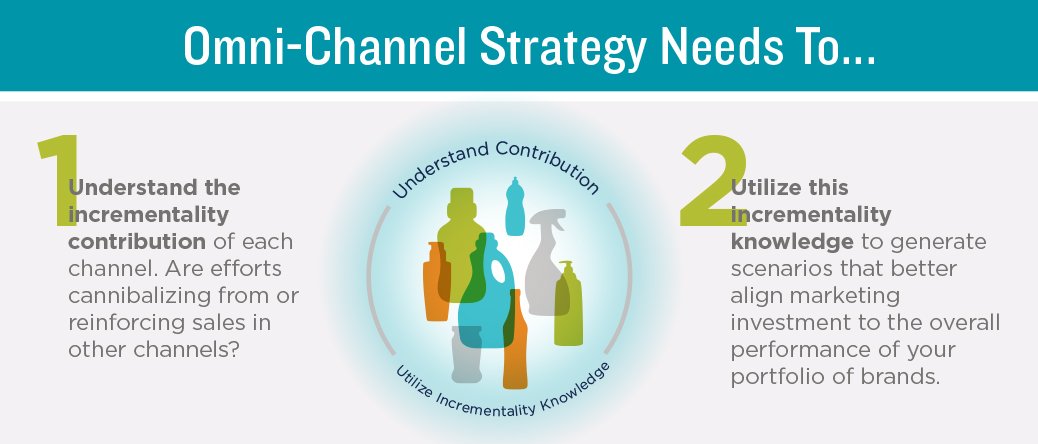
One of our larger FMCG clients recently asked Middlegame if we could help them understand how to better develop and leverage Omni-Channel. Omni-channel management is a multichannel approach to sales designed to provide a seamless shopping experience.
A significant series of efforts presented by Amazon (particularly subscription replacement) highlighted the potential of e-commerce to senior management. In fact, sales in this channel were up over 40% in 2016 versus the same time last year. The big question: Was this increase an incremental gain for the brand as a whole? Explaining transferred demand across multiple channels and customers is actually no different for our CIA® platform than demonstrating the interaction and incrementality across products within the channels. To be honest, transferred demand needs to be anticipated and evaluated across all three data dimensions: product, geography, and even time, i.e. pantry-loading.
Regardless, an Omni-Channel strategy needs to understand two key components of shopper response. The first is to explain the incrementality contribution of each channel. Is the overall impact of your efforts cannibalizing from other channels? Or is it potentially synergistic and reinforcing sales in those other channels? The second is to utilize this incrementality knowledge to generate scenarios that better align your support and marketing investment to the overall performance of your portfolio of brands and channels. Historically, our analysis looked at the impact of promotions and the ability to address the percent of incremental lift that was actually due to transferred demand across products or transferred demand across geographies, i.e. key accounts in specific markets.

In a way, this was the foundation of Omni-Channel analytics. Some of the original work was for P&G. Leveraging CIA®, we demonstrated substantial differences in the incrementality of price promotions for various brands across several markets in the Southeast Region of the United States. While Tide laundry detergent generated the greatest lift, they also produced the largest cannibalization both within the P&G portfolio at the retailer and from the Tide offering in rest of the market. The cannibalization levels well over-indexed versus both Gain and Era, but the impacts also differed greatly across retailers. Admittedly, we didn’t find synergistic impacts. But the ability to simultaneously see the impact across channels as well as across products introduced a whole series of hypotheses to test.
Getting back to Omni-Channel, our current project has determined the unique contribution of e-commerce versus traditional food, drug, and mass stores. After integrating the online and offline data, our models suggest that there is no measurable “showroom effect.” However, the improved online presence has cannibalized traditional stores sales. The impact is marginal since online was 2% of total brand sales. On the other hand, promotions in traditional stores only cannibalizes sales in other traditional stores. Every category and brand is unique, but using e-commerce to shield this brand from the immediate competitive effects of the traditional store shelf was effective in this instance. We’re pretty excited about expanding the analysis later this year to see what other brands suggest.
Middlegame is the only ROMI consultancy of its kind that offers a holistic view of the implications of resource allocation and investment in the marketplace. Our approach to scenario-planning differs from other marketing analytics providers by addressing the anticipated outcome for every SKU (your portfolio and your competitors’) in every channel. Similar to the pieces in chess, each stakeholder can now evaluate the trade-offs of potential choices and collectively apply them to create win-win results.
